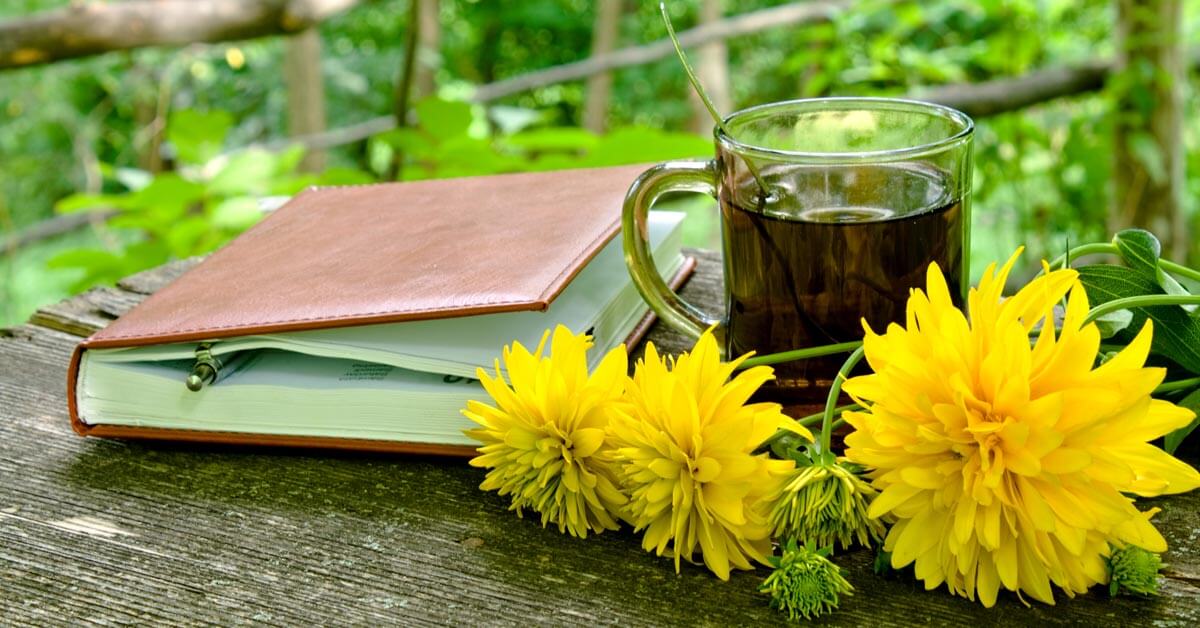At a certain point in winter, we all start dreaming of getting outdoors again and starting to plant and grow our flowers and vegetables. If this sounds like you, here’s a great guide for setting up a garden journal to help you plan out your gardens.
Why have a garden journal?

The main reason to keep a garden journal is to keep track of what we’ve planted and where. More than that, though, it helps you track from year to year what worked well and what challenges you faced. It’s also a great resource to refer to and share with newer gardeners that are just starting out, or even share with a home buyer if you’re moving properties. Regardless of the reason, and the size and scale of your gardens, read on for tips on how to get started.
Types of garden journals
There are many different types of garden journals, just as there are different types of gardeners. Some journal online while others have a little book they can take outside with them. It doesn’t matter what you use, a notebook, a binder, or a prepared commercial journal, just find what works for you and what will be the easiest to use. You might wish to find a model that allows you to add pages at the end. If you struggle with writing and you’re looking to improve your grammar and writing skills, you can also use the winter downtime to check out online resources like OxEssays.com, PaperFellows.com, and Essayroo.com.
Finding out hardiness zone and frost dates

The first step is to note down the plant hardiness zone and the frost dates in the spring and fall. You may already know them, but if not, find out right away because it’s crucial information and best kept at the front of the journal for quick reference. At this point, you should section your journal in different parts, whether with tabs or divider pages. The next part of this article will outline the different sections for your journal.
1. Sketch
The first section should be a sketch of your gardening area. It’s not necessary, but it’s very helpful to be able to record the location of what you’ve planted, and planning purposes. It’s also useful for vegetable gardeners to plan their crops if you’re aware of crop rotation practices and planning to follow those. According to Richard Graham, a gardening expert at Assignment Help and State Of Writing, “if you’re new to gardening, the sketch will also outline shady and sunny areas, and how many seeds or plants you need to fill the space. That information is available online so will save you money by buying the right amount.”
2. Seeds and plants
The next section is a list of seeds that you want to plant, including the variety and the planting date. This applies for flower and vegetable gardeners alike. You can record the information that’s on your seed packets because it’s valuable and helps keep track of what produced well.
3. Log
The next section is the running log of your garden activities, such as the fertilizer you’re using, amendments to the soil, the temperature, and more. These can be taken while you’re in your garden so you don’t forget anything.
4. Expenses
If you’re starting out, it’s not cheap because you need to invest in tools, soil amendments, construction for raised beds, plant costs, and more. As per Dan Anderson, a blogger at Eliteassignmenthelp.com and Custom Essay, “keeping receipts help to let you know if you’re on track for your budget and if the venture is worth it for you, although the benefits for your health and taste of homegrown food are priceless.”
5. Calendar
By adding a calendar section to your journal, you can calculate key harvest dates and plan when you’ll be getting certain types of vegetables and herbs.
6. Maintenance
The last section is the maintenance part. This is where you include every tip and info you need for your garden, from weeding, watering, controlling pests, harvest, and more. You can have information tailored to your garden and add to it as you go, making note of what’s working best for you.
Having a garden journal is just one step of the gardening process that allows you to document your challenges and successes, and it’s a great resource to refer to regularly from year to year as you’re planning your garden. Happy gardening!
Author Bio:
Beatrix Potter, a manager at Do My Assignment and Academized.com, writes about lifestyle and gardening. She has a green thumb and spends hours in her large garden, trying new seeds and soil combinations and sharing her experiences online. Beatrix is also a freelance editor at Do My Coursework.











